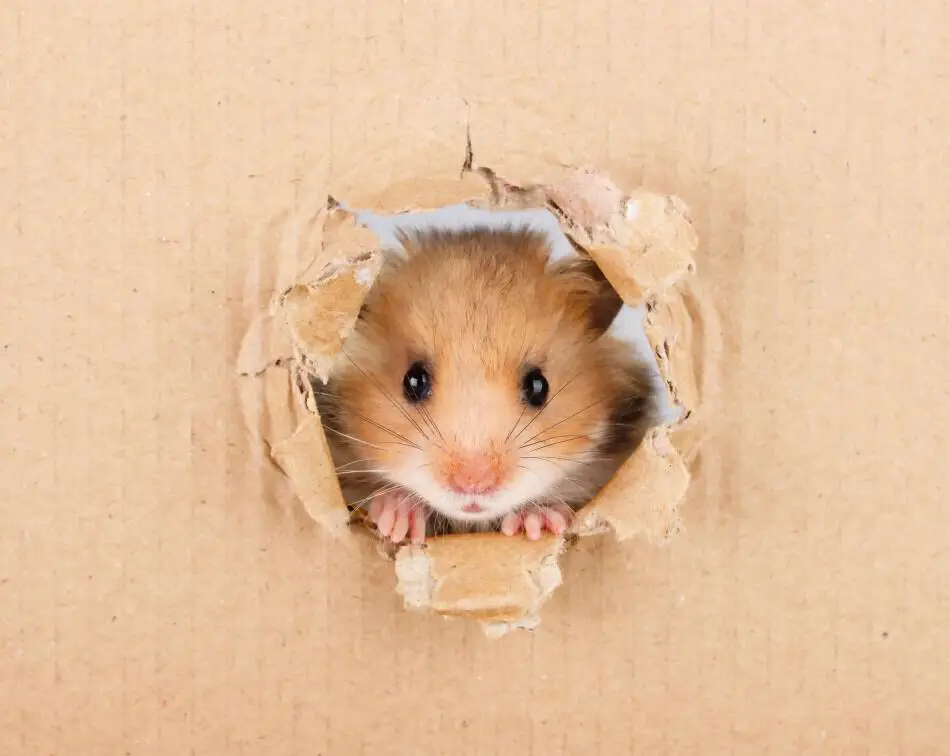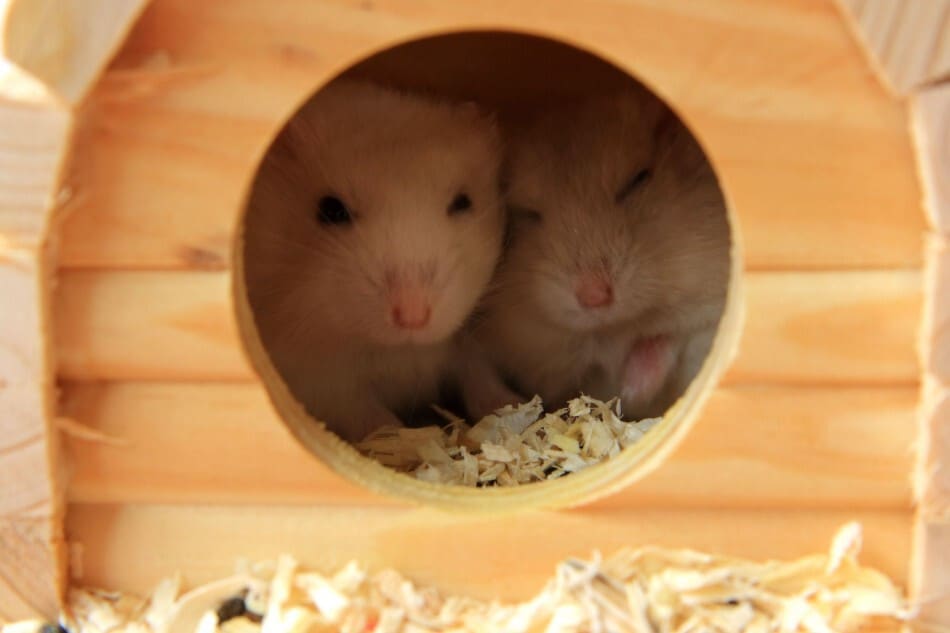Hamsters are the perfect pet for people of all ages. They are a whole lot of fun, can teach children the responsibilities involved in keeping a pet, and make fabulous companions.
As they live in a cage, they are also ideal for those whose living space is limited.
But what if you fall in love with the very adorable hamster and want to keep more than one? Do you need a separate home for each individual hamster?
Or can hamsters live together in the same cage?
Can hamsters live together in the same cage?
There is no simple answer to this question as every breed of hamster and each individual hamster is different. What works for one may not work for another, there are no guarantees. There are, however, certain breeds of the hamster that are more open to living in multiples together than others.
Table of Contents
Common Hamster Breeds and Compatibility
There are many breeds of hamster but most of them are only commonly found in the wild.
In captivity, there are just five types that are popular amongst hamster owners, so we’ll concentrate on these.
Syrian Hamster
When most people picture hamsters in their heads, it is the Syrian that will spring to mind. They are the largest, chunkiest, and most common breed kept as a pet within our homes.
Syrian hamsters come in over 40 colors and can reach between 4 and 6 inches. They are a great pet for people of all ages due to their friendly nature and ease of handling.
Compatibility – Syrian hamsters are solitary by nature, only meeting another to mate. One and only one Syrian hamster should be kept in a single cage.
Campbells Russian Dwarf Hamster
At around 3 inches in size, the Campbells Russian dwarf hamster is one of the smallest breeds kept in captivity. They come in a variety of colors but unlike the Syrian, have furry tails and feet.
Nimble and quick, this breed can be a challenge to handle, and socialization can take a while. Nipping is common with the Campbells if they feel threatened.
Compatibility – This breed can be kept in pairs or groups of the same sex. You will need to keep an eye on them however, as groups have been known to fall out and bully one another.
Winter White Russian Dwarf Hamster
The Winter White Russian dwarf hamster is often confused when spoken about with the Campbells due to being referred to as either ‘dwarf’ or ‘Russian’.
However, one look at the attractive Winter White and all confusion disappears. This breed is very distinctive with its 3.5 to 4-inch oval shape and Roman nose which sets it apart from other species.
Compatibility – Winter Whites are incredibly social with their own breed and can be kept easily in same-sex pairs or groups.
They should, however, be introduced at a very young age with siblings being avoided. Winter Whites get on better with strangers than they do with their own relatives.
Chinese Hamster
At around 4 inches the Chinese hamster is slightly longer and thinner than the two Russian breeds, with a fairly long tail. They come in three colors, are fairly timid but still have incredibly good natures.
They rarely bite and love to hang around, using their long tails to cling on.
Compatibility – Chinese hamsters can squabble, so when kept in groups or pairs of the same sex, they need to be kept an eye on.
Roborovskis Hamster
Rarely exceeding 2 ¾ inches the Roborovskis hamster is the smallest of the captive-kept breeds. They are distinguishable by their non-existent tails and difficulty in handling.
They are extremely active, nimble, and quick, so always fun to observe.
Compatibility – The Roborovski can be aggressive, so this type of behavior needs to be watched for when they are kept in groups or pairs.

How To Keep Hamsters Together Successfully
If you do choose to keep pairs or groups of hamsters in one cage here are five tips on how to do it successfully.
1. Early Introduction
In most cases, it is ideal to keep siblings together as they have known each other since birth. However, as already stated, this is not the case with Winter White Russian Dwarf hamsters which often squabble with their siblings.
In their case, you should ensure that the group you are placing together are all no older than 7 to 8 weeks. Any older than this and the chances are they will not accept each other.
2. Ample Sized Housing
Even the best-socialized groups of hamsters will struggle to remain harmonious if they do not have enough space in their cage.
For this reason, it is important that you select one that has plenty of room for all the hamsters to move and have their own space when they want it.
3. Keep It Same Sex
Unless you plan on breeding your hamsters it is a really good idea to keep your groups and pairs same sex. Hamsters can reproduce very quickly and unless you have multiple cages to keep offspring in or someone who wants them, you’ll want to avoid their breeding.
As a side note, it is advisable that you learn how to sex hamsters yourself as well as relying on pet stores. Mistakes can be made by anyone but with two people checking the sex, errors are less likely to happen.
4. Provide Multiple Feeding Areas
Food is definitely one of the things that groups of hamsters will squabble over. To avoid this, you should provide multiple food and water bowls.
This means that hamsters can always pick elsewhere to eat should the more dominant hamsters in the group become possessive of food.
5. Be Vigilant
Even hamsters that have lived harmoniously together for months, even years, can suddenly turn on each other. This means that you will always need to be vigilant and watchful regarding interactive behavior between your group of hamsters.
Be aware that if your hamsters draw blood or are constantly harassing others, you should separate them from the group. Fights between hamsters can escalate quickly and easily be fatal.
Conclusion: Can hamsters live together in the same cage?
As the above has shown it is perfectly feasible for you to keep pairs and groups of many breeds of hamsters together in relative harmony.
You do, however, need to be watchful and mindful that happy situations can change. You may need to separate individuals from time to time and for this a spare cage is always a good idea.





